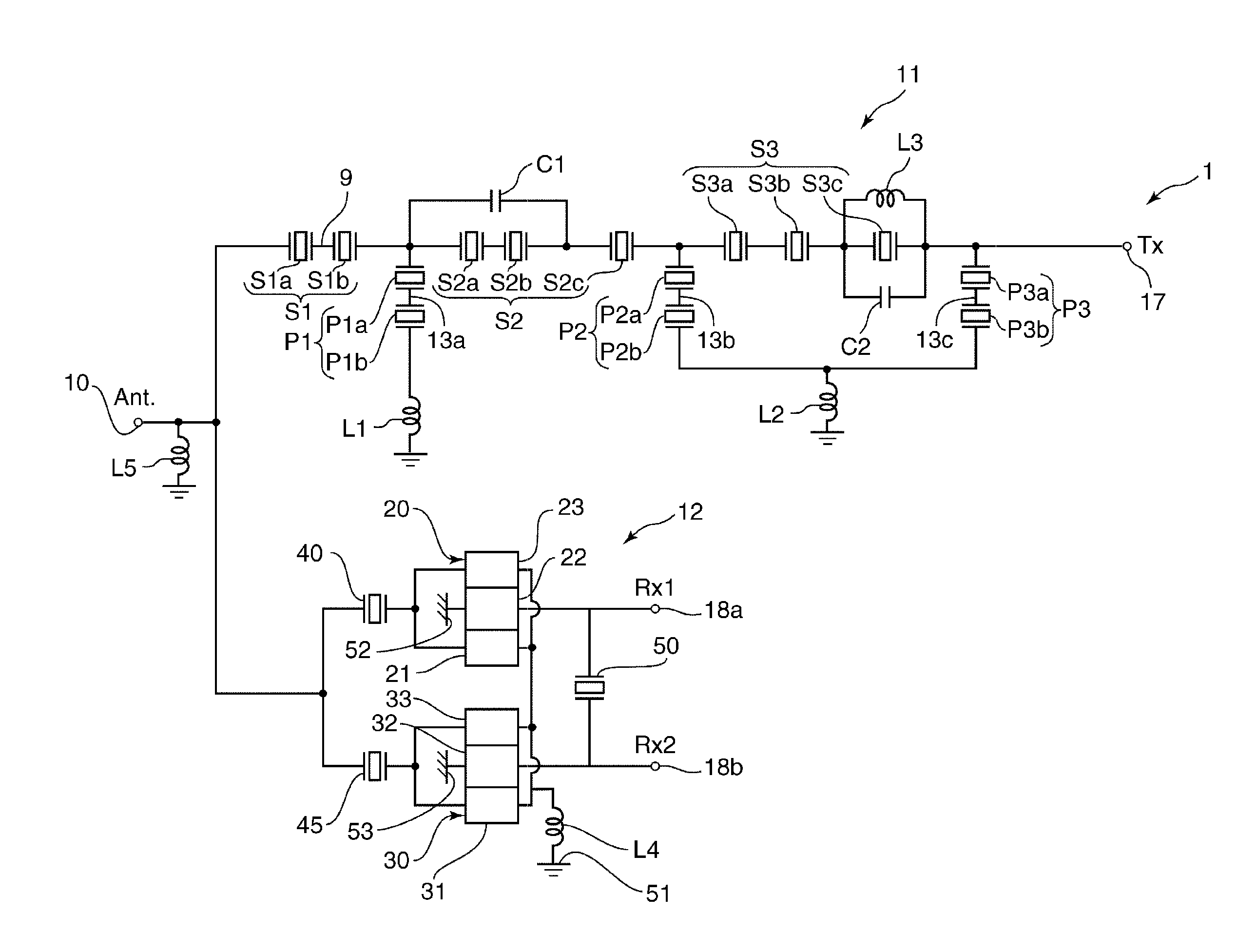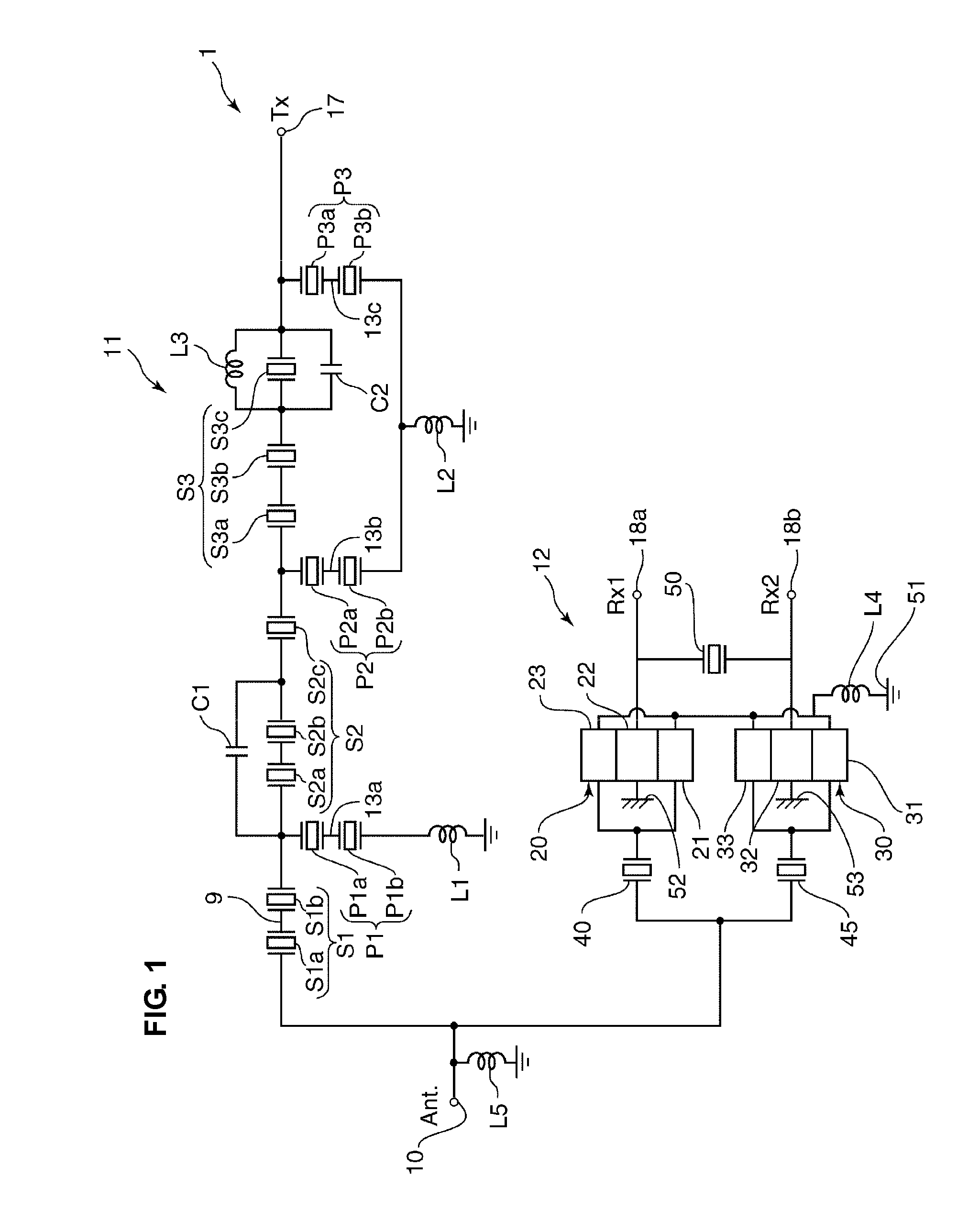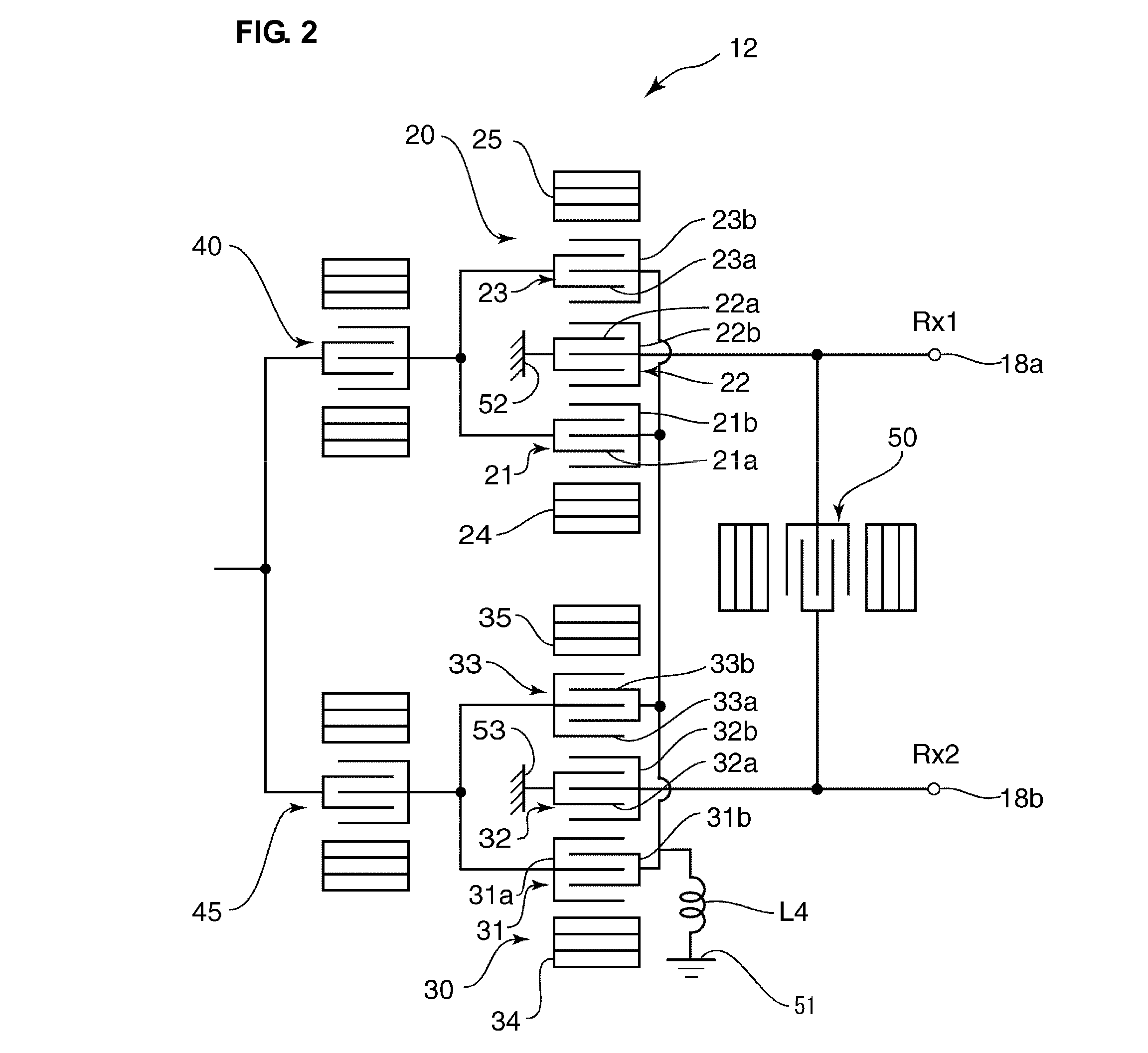Branching filter
- Summary
- Abstract
- Description
- Claims
- Application Information
AI Technical Summary
Benefits of technology
Problems solved by technology
Method used
Image
Examples
first preferred embodiment
[0023]FIG. 1 is a circuit diagram of a branching filter according to a first preferred embodiment of the present invention. As illustrated in FIG. 1, a branching filter 1 according to the present preferred embodiment includes a transmission filter element 11 and a reception filter element 12. The reception filter element 12 is disposed between an antenna terminal 10 and each of a first reception signal terminal 18a and a second reception signal terminal 18b. The transmission filter element 11 is disposed between the antenna terminal 10 and a transmission signal terminal 17. An inductor L5 is connected between a ground potential and a node of the antenna terminal 10, the transmission filter element 11, and the reception filter element 12.
[0024]In the present preferred embodiment, an example is described in which each of the transmission filter element 11 and the reception filter element 12 is preferably a filter that utilizes a surface acoustic wave. However, the present invention is...
example 1
[0053]The branching filter 1 having the structure illustrated in FIGS. 1 and 2 and enabling Rayleigh waves to be excited was produced as described below, and the insertion loss of the transmission filter element 11 occurring when a signal was input from the transmission signal terminal 17 to the antenna terminal 10 was measured.
[0054]In the production of the transmission filter element 11, first, a silicon dioxide (SiO2) film having a thickness of approximately 190 nm defining a previous film was formed on a lithium niobate (LiNbO3) substrate having a cut angle of approximately 126.0°. Then, a groove corresponding to the shape of an electrode structure was formed on the previous film. In the groove, a nickel-chromium (NiCr) film (with a thickness of approximately 10 nm), a platinum (Pt) film (with a thickness of approximately 60 nm), a titanium (Ti) film (with a thickness of approximately 10 nm), an aluminum (Al) film (with a thickness of approximately 90 nm), and a Ti film (with a ...
second preferred embodiment
[0104]In the first preferred embodiment, an example is described in which the inductor L4, the comb electrode 22a of the second IDT electrode 22, and the comb electrode 32a of the second IDT electrode 32 are connected to different ground electrodes. However, the present invention is not limited to that example. For example, as illustrated in FIG. 6, the inductor L4, the comb electrode 22a of the second IDT electrode 22, and the comb electrode 32a of the second IDT electrode 32 may be connected to the same ground electrode 51.
[0105]Even in this case, similar to the above first preferred embodiment, as a transmission characteristic of the transmission filter element 11, a new attenuation range can be provided in a region higher than the pass band of the transmission filter element 11. Accordingly, the number of attenuation ranges that the transmission filter element 11 needs to provide can be reduced. Thus, the number of parallel arms in the transmission filter element 11 can be reduc...
PUM
 Login to View More
Login to View More Abstract
Description
Claims
Application Information
 Login to View More
Login to View More - R&D
- Intellectual Property
- Life Sciences
- Materials
- Tech Scout
- Unparalleled Data Quality
- Higher Quality Content
- 60% Fewer Hallucinations
Browse by: Latest US Patents, China's latest patents, Technical Efficacy Thesaurus, Application Domain, Technology Topic, Popular Technical Reports.
© 2025 PatSnap. All rights reserved.Legal|Privacy policy|Modern Slavery Act Transparency Statement|Sitemap|About US| Contact US: help@patsnap.com



